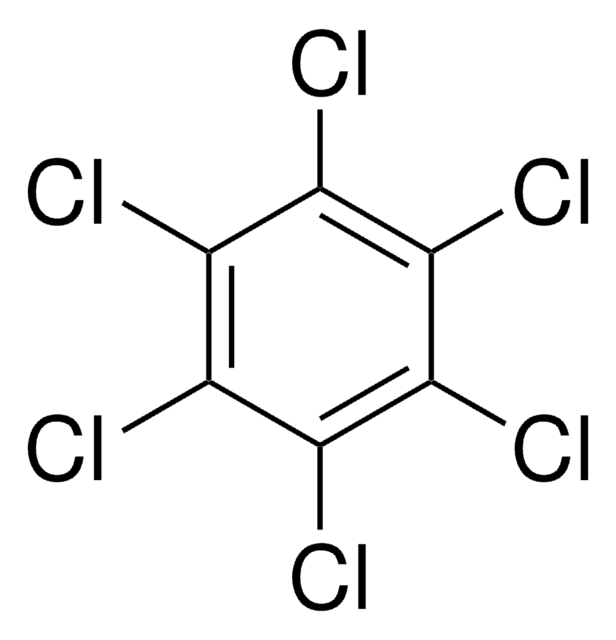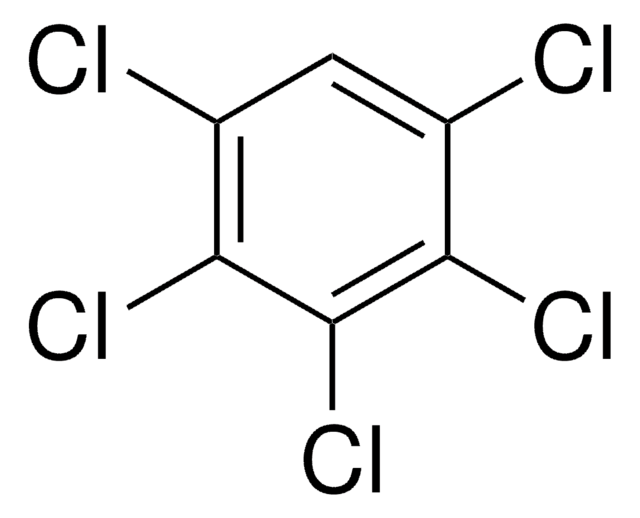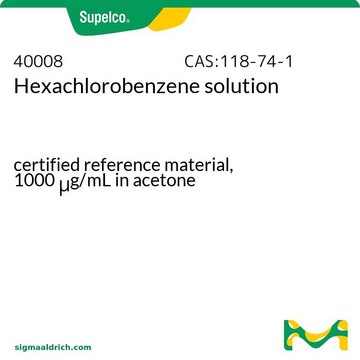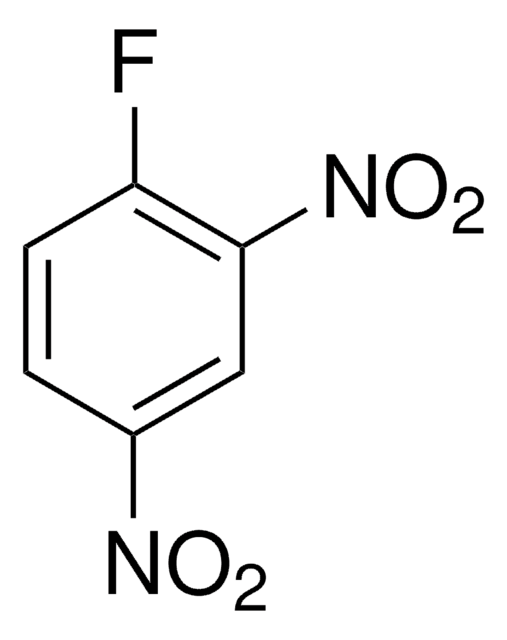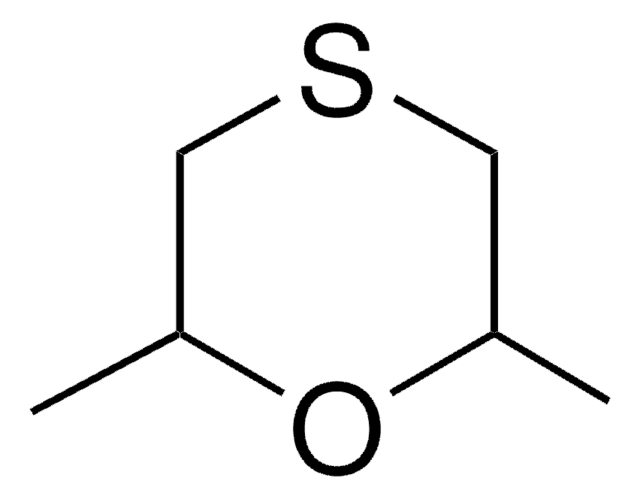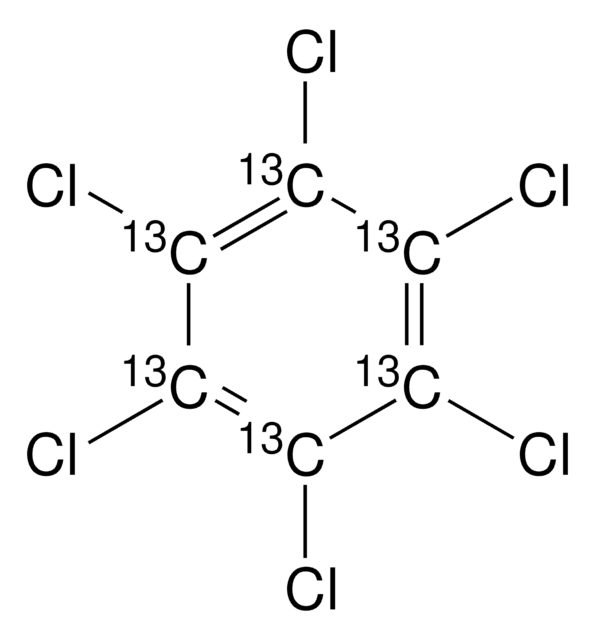All Photos(1)
About This Item
Empirical Formula (Hill Notation):
C6Cl6
CAS Number:
Molecular Weight:
284.78
Beilstein:
1912585
EC Number:
MDL number:
UNSPSC Code:
12352100
PubChem Substance ID:
Recommended Products
Assay
99%
bp
323-326 °C (lit.)
mp
227-229 °C (lit.)
SMILES string
Clc1c(Cl)c(Cl)c(Cl)c(Cl)c1Cl
InChI
1S/C6Cl6/c7-1-2(8)4(10)6(12)5(11)3(1)9
InChI key
CKAPSXZOOQJIBF-UHFFFAOYSA-N
Looking for similar products? Visit Product Comparison Guide
Signal Word
Danger
Hazard Statements
Precautionary Statements
Hazard Classifications
Aquatic Acute 1 - Aquatic Chronic 1 - Carc. 1B - STOT RE 1
Storage Class Code
6.1D - Non-combustible acute toxic Cat.3 / toxic hazardous materials or hazardous materials causing chronic effects
WGK
WGK 3
Flash Point(F)
Not applicable
Flash Point(C)
Not applicable
Personal Protective Equipment
dust mask type N95 (US), Eyeshields, Gloves
Regulatory Information
新产品
Choose from one of the most recent versions:
Already Own This Product?
Find documentation for the products that you have recently purchased in the Document Library.
B Z Fathepure et al.
Applied and environmental microbiology, 54(2), 327-330 (1988-02-01)
Hexachlorobenzene was dechlorinated to tri- and dichlorobenzenes in anaerobic sewage sludge. The complete biotransformation of 190 microM hexachlorobenzene (approximately 50 ppm) occurred within 3 weeks. The calculated rate of hexachlorobenzene dechlorination was 13.6 mumol liter-1 day-1. Hexachlorobenzene was dechlorinated via
Fredrick Orori Kengara et al.
Environmental pollution (Barking, Essex : 1987), 173, 168-175 (2012-12-04)
The aim of the study was to induce and enhance the degradation of hexachlorobenzene (HCB), a highly-chlorinated persistent organic pollutant, in two ecologically different tropical soils: a paddy soil (PS) and a non-paddy soil (FS). The degradation of HCB was
Lifei Zhanga et al.
Environmental technology, 33(16-18), 1945-1951 (2012-12-18)
Decomposition of hexachlorobenzene (HCB) on high surface area y-alumina was comprehensively studied using in situ Fourier transform infrared spectroscopy, gas chromatography/mass spectrometry (GC-MS) and ion chromatography. Monitoring of the temperature-dependent decomposition by Fourier transform infrared spectroscopy showed that HCB decomposed
Shuling Song et al.
Chemosphere, 91(2), 145-149 (2013-01-23)
High concentration of hexachlorobenzene (HCB) was detected in Beijing breast milk in 2002. In order to identify trend in exposure, 65 breast milk samples were collected from 50 primiparous mothers during 2009-2011. The present concentration of HCB in the breast
Henrik Kylin et al.
Environmental science & technology, 46(20), 10982-10989 (2012-09-21)
The partitioning of α- and γ-hexachlorocyclohexane between air and the moss Hylocomium splendens and the lichen Cladina stellaris were studied under laboratory conditions. After cultivation of the sample material to obtain a common starting point free from outside influence, the
Our team of scientists has experience in all areas of research including Life Science, Material Science, Chemical Synthesis, Chromatography, Analytical and many others.
Contact Technical Service